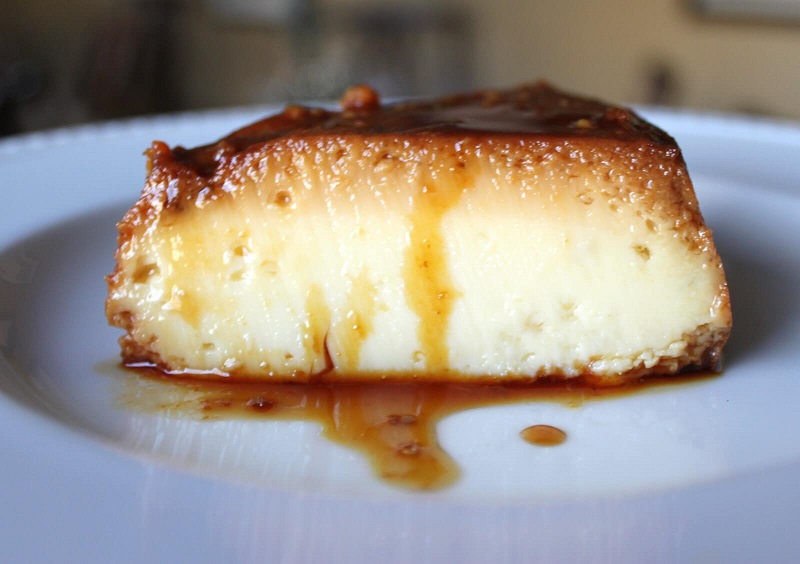Flan is a popular dessert among many, and some even attempt to make it at home. However, creating a smooth and flawless flan is not always easy, as it often ends up with a bumpy surface. Why does this happen, and how can we fix it?
1 Why Does My Flan Have a Bumpy Surface?

When making flan, it is common to encounter bumps on the surface, or even inside and at the bottom of the flan.
First, let’s address the issue of bumps on the surface. This usually happens when we use the steam baking method. The steam rises, condenses on the lid of the pot, and then drips back down onto the flan, causing the bumpy texture.
Secondly, the flan may have bumps inside and at the bottom. This is typically due to overheating the egg and milk mixture, causing it to boil and create a honeycomb-like structure inside the flan. It can also happen when baking the flan in an oven if the metal tray touches the sides of the oven, resulting in higher temperatures at the bottom and, consequently, bumps on the flan’s surface.
2 How to Prevent Bumps on Your Flan
For bumps on the surface, a simple solution is to cover the mouth of the flan mold with aluminum foil before steam baking.
If you don’t have aluminum foil, you can use a highly absorbent cloth to wrap the lid of the pot tightly. This will prevent the steam from condensing and dripping back onto the flan. For extra caution, you can also open the lid every 10 minutes to wipe away any condensed water.

In the case of bumps inside and at the bottom of the flan, it is crucial not to overmix the egg and milk mixture. Overmixing can create air bubbles that cause bumps inside the flan.
Instead, gently stir the mixture in one direction until the eggs are fully blended. Also, remember to strain the mixture through a sieve to remove any remaining egg white bits, ensuring a smooth and creamy texture.

If you’re using an oven, preheat it to a temperature between 150°C and 160°C for about 10 minutes before baking. When baking, remember to place a cloth in the baking tray, and pour boiling water to reach about half the height of the mold. This will help you achieve that soft and smooth flan texture.
With these tips in mind, we hope that you can now create flawless flan at home. Good luck and happy baking!

































